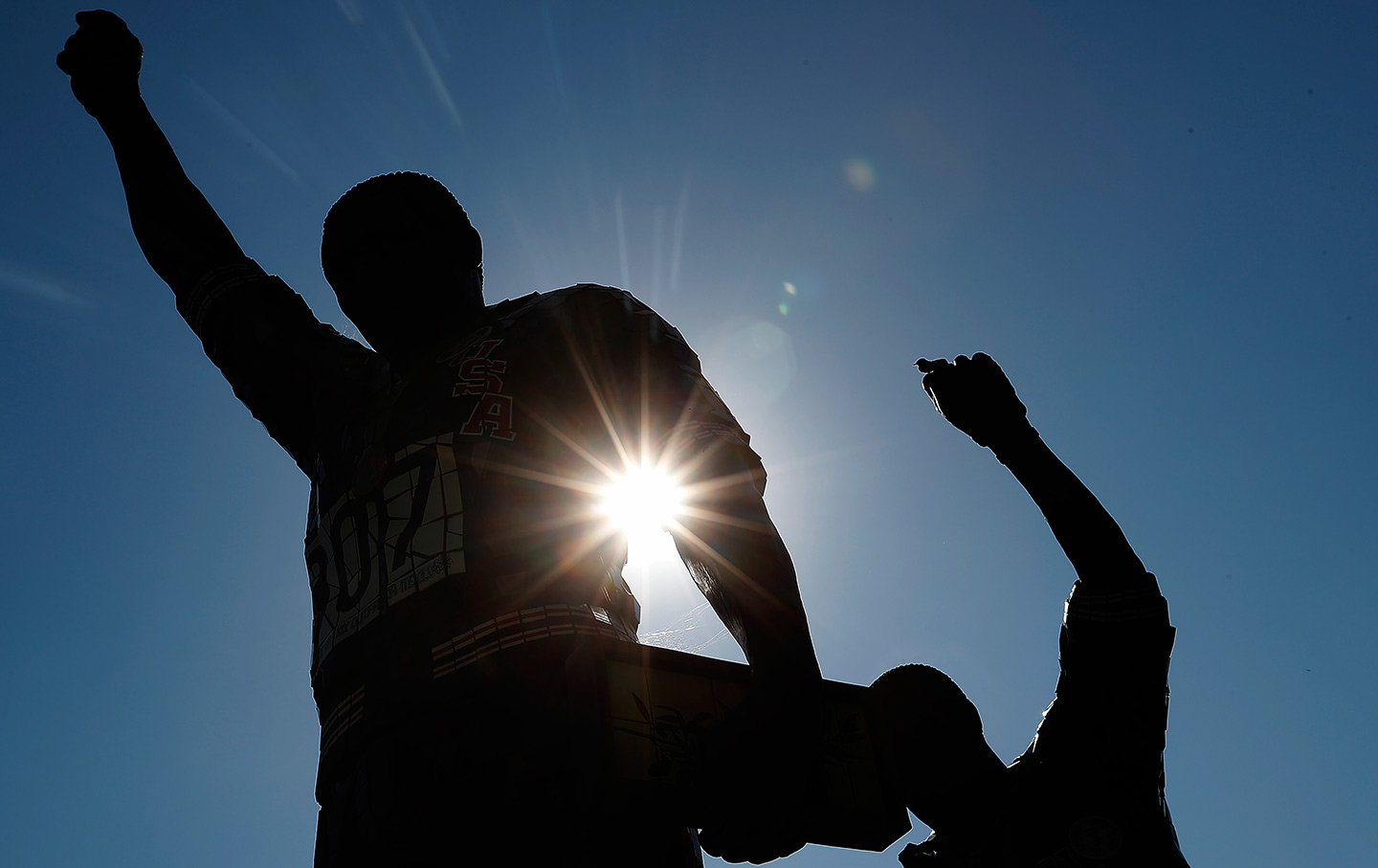
A statue in honor of former Olympians Tommie Smith and John Carlos is seen on the campus of San Jose State University in October 2018.(AP Photo / Tony Avelar)
San Jose State, once known as Speed City, was home to the most legendary track-and-field team of the 20th century. The SJSU Spartans included Tommie Smith, Lee Evans, and John Carlos, the Olympic-medal-winning icons of the 1968 games in Mexico City. Smith and Evans set world records in the 200 and 400 meters. and Smith and Carlos, of course, became iconic when they raised their fists on the 200-meter-medal stand.
The track where this team practiced, Bud Winter Field on the South Campus, is hallowed ground, a national monument to athletic greatness and social uplift. But it was announced this week that Bud Winter Field will be paved so San Jose State can put up a parking lot. As San Jose State Athletics Media Relations Director Lawrence Fan said in bloodless fashion, “There were plans to see if a new track could be installed. But the greater need for San Jose State and San Jose State Athletics is a multi-level parking structure.”
I reached out to John Carlos, whose statue adorns the campus, for his reaction to the news. To say he was dismayed is an understatement. “They are trying to dispose our history with the school. I’m sure down the line they are going to try to pull our statue down too. It’s wrong. And it’s been wrong, how they’ve treated our history for some time.”
It’s worth noting that the aforementioned statue, which depicts John Carlos and Tommie Smith with their fists aloft, was an initiative of the students on campus, not the administration. It’s also worth noting that the track is still used by young runners who feel the sense of history with every stride. KTVU quoted Downtown College Prep Track and Field Coach Rich Read, who said, “It’s a big shame to see it go, a chunk of my heart out the door. That moment in history you feel it’s almost going to get lost, even though it happened and you have it recorded it just feels like it will disappear.”
Ron Davis, the former head track coach and an San Jose State University Hall of Famer, pointed out that the timing of this move is awfully convenient, taking place one year after 2018, which saw the school undertake campus-wide commemorations of the 1968 Olympic team—their athletic importance as well as the social importance of what they represented to the world. The school reaped the good will and publicity fostered by the 50th anniversary remembrances, and then, after the confetti was swept away, went after the track because there is no commodity more valuable to the modern university than real estate.
Davis also said, “What else can one expect from a university with no love of their track history or the individuals who made that history? Four-star track athletes from San Jose State University won more medals at the 1968 Olympic Games than many countries, including the Soviet Union. Their NCAA National Championship cross-country team was the first integrated team to win that title. The removal of the track at San Jose State University is a step to erase the great history in track and field at the school.”
A former distance runner and teammate of Ron Davis said to him, “Another dagger in the heart, another sad day for the Spartans. I’ve been hearing rumors about this for a while, but now I guess it’s official. From the long view, it’s good that you are not there anymore. They don’t deserve you or people like you.”
Dave ZirinDave Zirin is the sports editor at The Nation. He is the author of 11 books on the politics of sports. He is also the coproducer and writer of the new documentary Behind the Shield: The Power and Politics of the NFL.